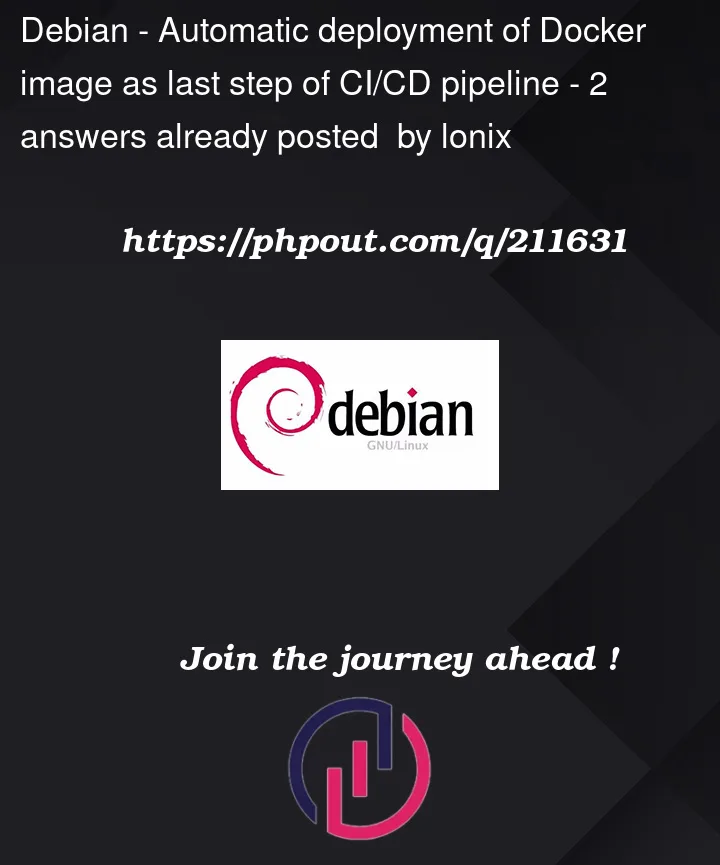I am using a CI/CD server (self-hosted Woodpecker) to manage my app. The pipeline runs all these steps: clone, build, test, package as container, push to container registry (self-hosted Gitea).
But the final step is missing: "deploy". I don’t want to ssh into the app server (a self-managed Debian VPS) and redeploy manually – I want to automatically pull the newest Docker image and redeploy the app. I’d like that to be the pipeline’s final step.
I could create a pipeline step that uses ssh to run a script on the app server. But that feels kind of dirty – before using CI/CD I did everything via scripts, but I’d like to do things the modern way now.
I’m not a CI/CD expert, so I don’t know how this is typically done?
(I am running a normal Docker environment, not Kubernetes.)




2
Answers
Another few approaches that I tinkered with:
One could create a pipeline step that uses ssh to log into the app server and run a "deployment script". The result would be captured by the pipeline step so that it is part of the output log.
Or a script or cron job on the app server, that polls the docker registry (every minute say) for new images, then redeploys. This decouples the CI/CD and app servers. I think this is cleaner, but the problem is there is always a one minute delay before redeployment.
Or a separate webhook listening "app" on the app server, which listens for a specific webhook from the container registry and then runs a script. There are existing tools for that, so there's no need to write one - one only needs to write the deploy script itself. Seems the most popular tools are webhook and webhookd.
A common approach for your situation, considering you are not using an orchestration system like Kubernetes, is using webhook triggers that tell your server to update whenever a new Docker image is pushed to your container registry.
This process could work as follows:
Create a simple application that listens for webhooks on your server. This application should do the following:
Configure your container registry to send a webhook to this application whenever a new image is pushed.
In terms of implementing this:
docker-compose down && docker-compose pull && docker-compose up -d.This approach keeps your CI/CD pipeline clean and doesn’t require SSH-ing into your server. Just remember to secure your listener application because it will have the power to bring your app down and back up. Authentication for the webhooks is a must.